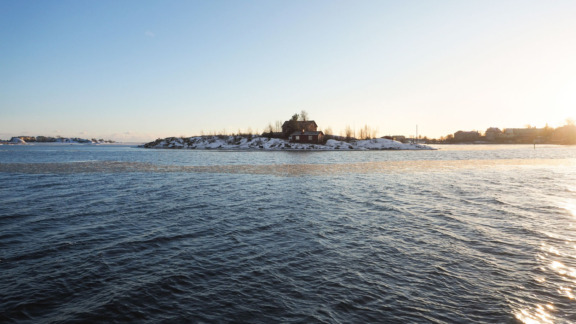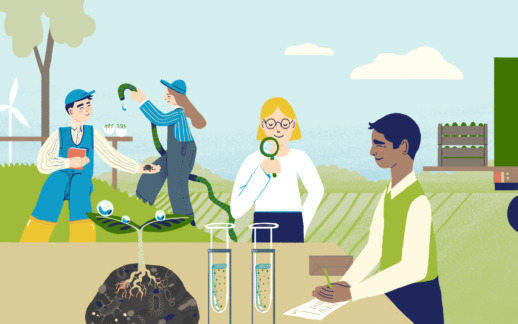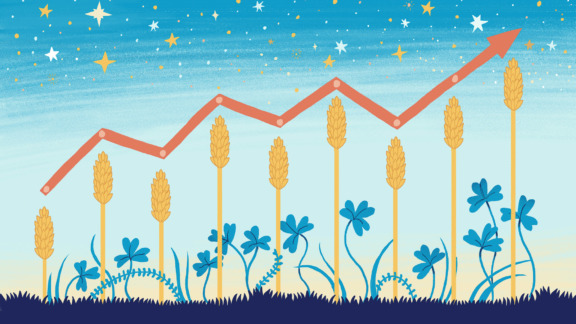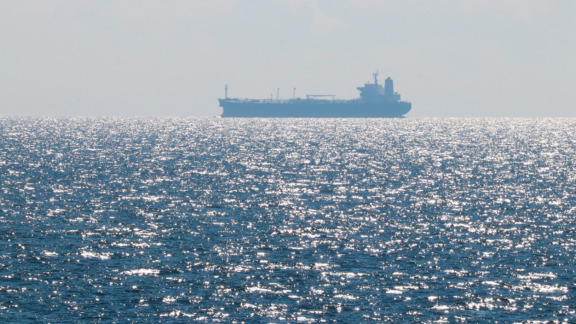The Course to Save Our Soils exceeded expectations
Baltic Sea Action Group organized the first Course to Save Our Soils 14th-16th of August at Qvidja farm in Pargas. The course was funded by the Finnish Ministry of Environment, and participants for these three day-long courses were invited by BSAG. The goal was to illustrate the importance of soil health, and soil’s role in protecting the Baltic Sea and fighting against climate change. Healthy soil retains nutrients, and is able to sequester carbon from the atmosphere. Storing carbon permanently into soil is the only known method to reverse climate change.
Biodiversity as a goal and a tool
Biodiversity was one of the course’s recurrent themes. Course participants were likewise diverse; gathered in Qvidja were journalists, politicians, active citizens, and artists. Problems like climate change affect everyone, which is why a wide arrangement of people and know-how is needed to solve the problem.
BSAG’s founder and Chair of the Board Saara Kankaanrinta introduced the participants to the biggest threats currently facing the earth, as well as soil’s role in fighting against them. Current farming practices rely heavily upon monocultures, the use of inorganic fertilizers and pesticides, and intensive tillage. The scale of industrial meat production is also massive. Both intensive farming and industrial meat production diminish biodiversity, increase erosion, cause eutrophication, and in many countries is done using unethical slave labor. Additionally, degraded farm lands release carbon instead of storing it, thus accelerating climate change. All these issues are linked and fuel each other.

”Microbes are an example of nature’s own product development, which has been going on for billions of years. However, humans are disturbing nature’s processes with our own unsustainable actions. Diverse ecosystems are resistant, and healthy soil with a diverse microflora is able to mitigate climate change by sequestering carbon from the atmosphere. Biodiversity is thus not only the goal, but also a tool to address environmental issues. The farmer can be the important player in solving these problems”, said Kankaanrinta.
BSAG’s other founder, Ilkka Herlin led the participants to the past. War technology and intensive farming have a somewhat shared history. Wars and soil degradation are related phenomena also today, as the violent conflicts in Syria originally began because of soil deterioration.
The big picture of nature’s complicated processes began to blur in the 19th century, as it became possible to study certain aspects of agriculture in laboratories. Laboratories were also the birthplaces for the first inorganic nitrogen fertilizers and pesticides, both of which were part of the war industry in the 20th century.
As Finland was struck with multiple food crises, aid systems to agriculture were established to ensure food security and self-sufficiency. The manufacturing and social conditions have since changed but the aid systems have stayed the same.
”Our food production would be on a more solid footing if it was built around healthy soil, nutrient cycling, and biological nitrogen fixation. We have a moral obligation to try and change the prevailing practices”, Herlin asserted.
Multisensory approach to soil
Later the participants got to visit Qvidja’s fields, where they studied the differences between fertile and unhealthy soil as instructed by agronomist Juuso Joona. Healthy soil is filled with microbes. Plants grow well in this type of soil, and their roots together with substances excreted by microbes bind the soil particles together. This prevents even heavy rains from washing the soil and its nutrients away from the fields. Healthy soil also retains large amounts of water, protecting the crops from drought. Degraded soil on the other hand does not have much microbes, and is easily washed out by rain.
”Healthy soil is achieved by maximizing the soil’s microflora and plants’ photosynthesis with permanent vegetative cover, and minimizing tilling. It’s wiser to imitate nature rather than to fight against it”, Joona stated.

Participants also got to investigate microbes through a microscope, while Ansa Palojärvi told them about the importance of different types of soil microbes. Especially important are the types of fungi that establish symbiotic associations with plants’ roots. The plant gives them carbohydrates and in exchange the fungus increases the roots’ capacity to absorb water and nutrients. Other plants form symbiotic associations with nitrogen fixing bacteria. This so called biological nitrogen fixation diminishes the need for inorganic nitrogen fertilizers, and is one of the most important ecosystem services provided by soil microbes. Decomposers are also a very important group of soil microbes, as they release nutrients from dead organic matter.
”All plants are not able to form symbiotic associations. For these types of plants it’s especially important to live in a diverse environment”, told Palojärvi.

At the end of the day the participants got a glimpse of the Carbon Action pilot project, created in collaboration between BSAG, the Finnish Meteorological Institute, and Sitra. Qvidja’s fields partake in the project studying carbon sequestration from atmosphere into soil. The participants got to see some of the measuring equipment used to determine the carbon flux between Qvidja’s fields and the surrounding atmosphere.
All three course days ran smoothly, and received praise from the patricipants. Course to Save Our Soils had ”exceeded expectations, which were already high”. The next step is a fourth course day organized in Brussels later in the fall.
The course to save our soils is funded by the Finnish government’s key project funds.



